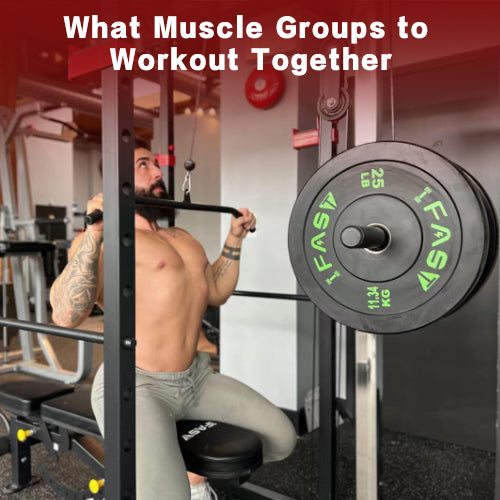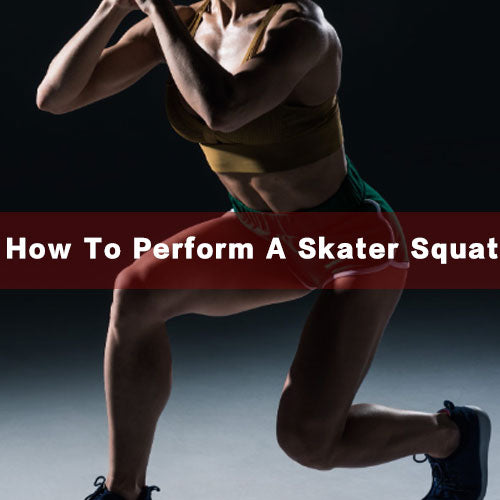
When it comes to building a strong and sculpted upper body, incorporating rack chest exercises into your workout routine can be highly effective. Utilizing a power rack or a squat rack allows for added stability and safety while targeting the muscles of your chest, shoulders, and arms. In this comprehensive guide, we will explore a variety of rack chest exercises that will help you develop a well-defined chest and upper body strength. Whether you're a seasoned gym-goer or a beginner, these exercises are suitable for all fitness levels. Get ready to take your chest workouts to the next level!
Why Rack Chest Exercises?
Precision and Safety
Rack chest exercises performed within the confines of a power rack provide unparalleled precision and safety. The adjustable safety pins or spotter arms act as fail-safes, ensuring that you can challenge your chest muscles without compromising safety.
Versatility Unleashed
A power rack opens the door to an array of chest exercises beyond the conventional bench press. From incline presses to chest-supported rows, the versatility of a power rack transforms your chest workout into a dynamic and multifaceted experience.
7 Rack Chest Exercises For You
1.Barbell Flat Bench Press
The barbell bench press is a classic and staple exercise for developing a strong and well-defined chest. This exercise primarily targets the pectoralis major muscles, along with the anterior deltoids and triceps. To perform the barbell bench press

- Lie flat on a weight bench positioned within the power rack, with your feet firmly planted on the floor.
- Grasp the barbell with an overhand grip slightly wider than shoulder-width apart.
- Lift the barbell off the rack and lower it towards your chest while maintaining control.
- Pause briefly at the bottom and then push the barbell back up to the starting position, fully extending your arms.
2.Close-Grip Bench Press
The close-grip bench press is an excellent exercise for targeting the triceps and inner chest muscles. By bringing your hands closer together on the barbell, you shift the emphasis from the outer chest to the triceps. To perform the close-grip bench press

- Lie flat on a bench within the power rack, with your feet firmly planted on the floor.
- Grasp the barbell with an overhand grip, bringing your hands closer together, approximately shoulder-width apart.
- Lift the barbell off the rack and lower it towards the middle of your chest while maintaining control.
- Pause briefly at the bottom and then push the barbell back up to the starting position, fully extending your arms.
3.Wide-Grip Bench Press
The wide-grip bench press is a variation of the traditional bench press exercise that focuses on targeting the chest muscles, particularly the outer portion. This exercise also engages the shoulders and triceps to a lesser extent

- Set up on a flat bench within a power rack or on a bench press station.
- Position your feet firmly on the ground, creating a stable base.
- Lie down on the bench with your back flat and your shoulder blades retracted.
- Grab the barbell with a grip that is wider than shoulder-width apart. Your hands should be positioned outside of the normal shoulder-width grip.
- Lift the barbell off the rack or have a spotter hand it to you. Hold the barbell with your arms fully extended over your chest, making sure your wrists are aligned with your forearms.
- Lower the barbell slowly and with control towards the middle of your chest. Your elbows should be at a 45-degree angle to your body.
- Pause briefly when the barbell reaches your chest, and then push it back up to the starting position, fully extending your arms.
4.Incline Barbell Bench Press
The incline barbell bench press is a popular exercise that primarily targets the upper chest muscles while also engaging the shoulders and triceps

- Set up an adjustable bench at an incline of around 30-45 degrees. Position it within a power rack or a bench press station.
- Sit on the bench and adjust it so that your eyes are directly under the barbell when it's racked.
- Position your feet firmly on the ground, creating a stable base.
- Lie back on the bench and position yourself so that the barbell is directly above your upper chest.
- Reach up and grip the barbell with a grip that is slightly wider than shoulder-width apart. Your palms should be facing away from you (overhand grip).
- Lift the barbell off the rack, fully extending your arms. Make sure your wrists are aligned with your forearms.
- Lower the barbell in a controlled manner towards the upper chest, maintaining a slight elbow tuck.
- Pause briefly when the barbell reaches your chest, and then push it back up to the starting position, fully extending your arms.
5.Decline Barbell Bench Press
The decline barbell bench press is a variation of the traditional bench press exercise that targets the lower portion of the chest muscles. This exercise also engages the triceps and shoulders to a lesser extent. Here's a step-by-step guide on how to perform the decline barbell bench press

- Set up an adjustable bench at a decline angle of around 15-30 degrees. Position it within a power rack or a bench press station.
- Lie down on the bench with your feet securely locked in the provided foot pads or positioned at the end of the bench to maintain stability.
- Position yourself so that the barbell is directly above your lower chest.
- Reach up and grip the barbell with a grip that is slightly wider than shoulder-width apart. Your palms should be facing away from you (overhand grip).
- Lift the barbell off the rack, fully extending your arms. Make sure your wrists are aligned with your forearms.
- Lower the barbell in a controlled manner towards the lower chest, maintaining a slight elbow tuck.
- Pause briefly when the barbell reaches your chest, and then push it back up to the starting position, fully extending your arms.
6.Dip
Dips are a highly effective bodyweight exercise that primarily targets the muscles of the chest, triceps, and shoulders. They can be performed on parallel bars, dip stations, or even between two sturdy chairs or platforms.

- Start by positioning yourself between two parallel bars or dip bars. Grip each bar firmly with your hands shoulder-width apart, palms facing inward. If using chairs or platforms, place them parallel to each other and grip their edges firmly.
- Lift your body off the ground, either by straightening your arms or bending your knees and crossing your feet behind you. This is your starting position.
- Engage your core muscles and maintain an upright posture throughout the exercise. Lean slightly forward to target the chest muscles or keep your torso more upright to engage the triceps and shoulders.
- Begin the movement by bending your elbows and slowly lowering your body downward. Keep your elbows tucked close to your sides and avoid flaring them out.
- Lower your body until your shoulders are slightly below your elbows or until you feel a stretch in your chest or triceps.
- Pause briefly in the bottom position and then push through your palms to extend your arms, raising your body back up to the starting position.
7.Pull ups
Find a sturdy overhead bar or pull-up bar that can support your body weight. You can use a bar specifically designed for pull-ups, a bar at a playground, or even a door frame pull-up bar.

- Stand beneath the bar and reach up to grip it with your hands slightly wider than shoulder-width apart. Your palms should face away from you (overhand grip) or you can use an underhand grip (chin-up grip) if that is more comfortable for you.
- Hang from the bar with your arms fully extended, and your feet off the ground. This is your starting position.
- Engage your core muscles and maintain a slight bend in your knees. Avoid swinging or using momentum to lift yourself up.
- Begin the movement by pulling your body up towards the bar, focusing on contracting your back muscles. Keep your elbows pointed down and close to your body as you pull.
- Continue pulling until your chin is level with or above the bar, and your chest is close to the bar.
- Pause briefly at the top position and then lower your body back down in a controlled manner, fully extending your arms.
Maximizing Your Rack Chest Workout
Warm-Up Adequately
Before diving into your rack chest workout, ensure a thorough warm-up. Mobilize your shoulders and perform light sets of the intended exercises to prepare your muscles and joints.
Focus on Form
Maintaining proper form is paramount for the effectiveness and safety of rack chest exercises. Keep your back flat, shoulders down and back, and control the descent and ascent of the weights.
Gradual Progression
As with any strength training routine, gradual progression is key. Increase weights incrementally to challenge your muscles without compromising form.
Elevate Your Chest Training with a Power Rack
Incorporating rack chest exercises into your routine can redefine your chest training experience. The power rack, with its safety features and versatility, provides a platform for you to push your limits and attain new heights of chest strength and development. Unleash the power of your chest with these rack-centric exercises and witness the transformative impact on your upper body strength.


